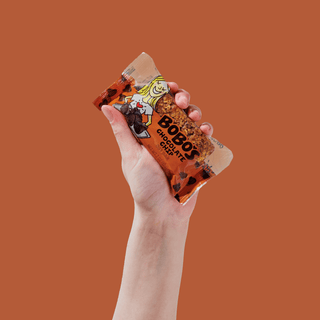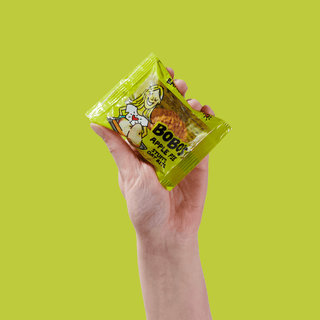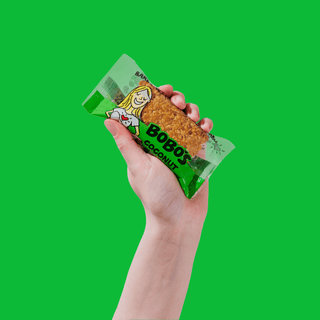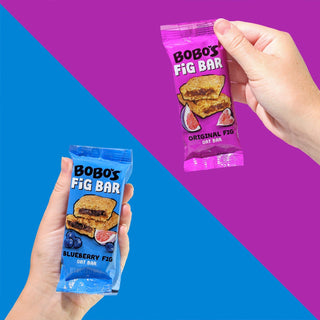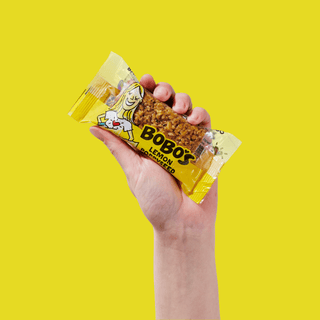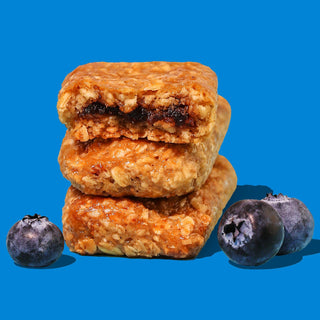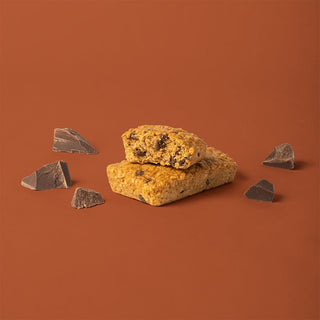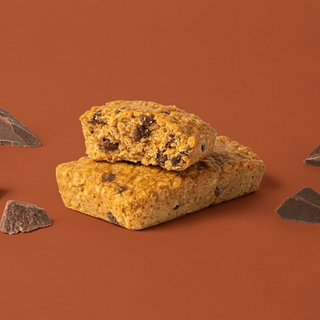Made with:
By Emma Caplan-Fisher
How to Choose the Best Snack Bars for Toddlers and Kids
Snack bars can be a lifesaver for keeping hungry kids happy, especially when everyone is running from one thing to the next throughout a hectic day. As a go-to snack, the best snack bars for kids are not only convenient and compact but, as one of several healthy kid's snack alternatives, there are many healthy and tasty picks on the market.
Keep reading to learn more about what exactly makes a healthy snack bar for toddlers and kids, and find some ideal options to choose from.
The convenience of snack bars for kids on the go
While in a perfect world, you'd be making homemade, healthy snacks for your kids to sit down with and enjoy each and every snack time, chances are you (and they) are much too busy for that — not to mention the fact that getting kids to eat healthy can feel like an uphill battle at the best of times.
Often, your kids will need a quick bite on the go or during school to keep their energy up, whether it's en route to soccer practice, during recess, on a family road trip, or during any other activity when they're not at home. This is why healthy snack bars for kids are incredibly convenient and easy. They're a simple addition to your older kids' lunch kits, or ideal for keeping your toddler busy, healthy, and full.
Essential nutrients and ingredients in kids' snack bars
While it can be tough not to focus on fun branding and marketing claims on kids' snack bar packages, it's much more important to keep the essential nutrients and ingredients in mind that your kids need to stay happy and healthy.
For example, when it comes to most snack bars, you should look at how much sugar is added along with macronutrients like fat and protein and micronutrients like iron and fiber (we'll get more into that, below).
When it comes to carbohydrates and natural sugars, unless it’s medically necessary, try not to focus too much on them. Children need carbohydrates for energy and most snack bars for kids will contain them.
Reading snack bar labels: What to look for and what to avoid
When it comes to reading nutrition labels, here's a rough guide of the things to look for in kid's snack bars. Remember, there is no perfect snack bar, so you might have a hard time staying within all of these levels. This is meant to be a guide only.
- Protein: 2 grams or more
- Fat: 3 grams or more
- Fiber: 2 grams or more
- Iron: 1 mg or more
- Added sugar: 5-8 grams or less
When it comes to the healthiest snack bars for kids or toddlers, it's important to avoid meal replacement bars or those touted for diets. Aside from sending the wrong message, this is because children are still developing and need full nutrition from what they eat.
As well, many new bars often come out with "trendy" ingredients, like adaptogens, nootropics, or CBD. Since there's limited research or studies done on how these ingredients affect children, you're best to either avoid them altogether or carefully proceed under the direction of your child's healthcare practitioner.
Remember, the best choices will be different for every family since each child has unique needs. It's always best to check nutrition labels and ingredient lists and, if ever in doubt, consult with your child's healthcare practitioner.
Balancing health with taste: Finding snack bars kids will enjoy
It's important to not only feed your kids nutritious, healthy snacks but to balance that with what they'll actually enjoy. The good news is you needn't compromise! It's easier than you might think to find snack bars that are both nutritious and appealing to children’s tastes (yes, even the most picky eaters).
Nutrients. Look for bars that give the most bang for your buck when it comes to nutrients. The right amount of protein, fiber, and healthy fat will ensure your kids' snack bar is both satisfying and satiating. Remember, if they're not filling enough, your kids will come to you for more snacks, which you probably don't want! Nuts, seeds, and dried fruit as main ingredients are good options.
In terms of amounts, the protein needs of kids under 10 years old will vary by their weight. As an approximate daily range, younger kids need about 14-20 grams and older kids need about 20-35 grams. Many snack bars contain a few grams of protein, so you'll need to consider where else your child is getting protein from throughout the day. For fiber, kids eight and under need about 19-25 grams per day. While a snack bar might have a few grams, they're best to get additional fiber from other healthy foods like fruits, vegetables, whole grains, and beans.
Calories. For toddlers, look for a bar with at least 90-100 calories. Older children will need about 150 calories or more from their snack. If this isn't sufficient, you can always pair the bar with something else (or find a more filling option). This can happen if your kid has a bigger appetite or is quite active.
Sugar. Try to avoid that inevitable high and crash that comes from too much added sugar — 5-8 grams is about right. Above all, it's best to focus on bars that are naturally sweetened.
Taste. Regardless of its nutrients, a snack bar should taste good to your child or they simply won't eat it. If they like sweets, look for bars made from dates or chocolate. If they prefer salt, try a seed or peanut butter-based bar. And, especially for toddlers and young kids, mouthfeel can be crucial — for example, if it's too crunchy or easily crumbles, kids may be turned off.
Allergy-friendly kids' snack bar options
Food allergies and intolerances are common in children (particularly nuts and dairy), and there are plenty of snack bars out there that cater to this. Just be sure to check the product's ingredient list so you know exactly what you're getting.
The FDA (U.S. Food & Drug Administration) recognizes nine common allergens that need to be identified on a product's nutrition label: shellfish, milk, peanuts, tree nuts, eggs, fish, wheat, soybeans, and sesame. This requirement helps you choose foods that are safe for your kids (or for the kids around them). However, it's important to remember that people can be allergic to other ingredients too.
Keep in mind that some snack bars may be produced in a facility where a common allergen is processed and may have come into contact with that allergen. This is sometimes disclosed by processors, but not always. What's more, processors periodically change their snack bar recipes, packaging, and facilities, so you should always check labels even if you're familiar with a certain product.
Popular snack bar products for kids
For easy reference during any grocery run, here are some of the best kid's snack bar options around.
Oat bars
Bobo's Oat Bars come in over 20 delicious flavors, so you're sure to find something that satisfies the very pickiest eater in your household. You can't go wrong with the original flavor that's packed with wholesome whole-grain oats and coconut oil. They're gluten-free, certified non-GMO, vegan, and dairy-free.
Oat Bites
For a quick taste of Bobo's Oat Bars, you can't go wrong with the miniature-sized oat bites snack. Pair one with another snack, like some fruit or veggies, or give the kids this small treat on its own to tide them over until mealtime.
PB&J oat snacks
If your kids are peanut butter and jelly fiends (like many!) you'll win them over every snack time with Bobo's PB&J oat snacks. These high plant-based-protein treats come in strawberry or grape flavors and combine wholesome, tasty ingredients like chocolate chips and cocoa powder and are ideal for active days.


